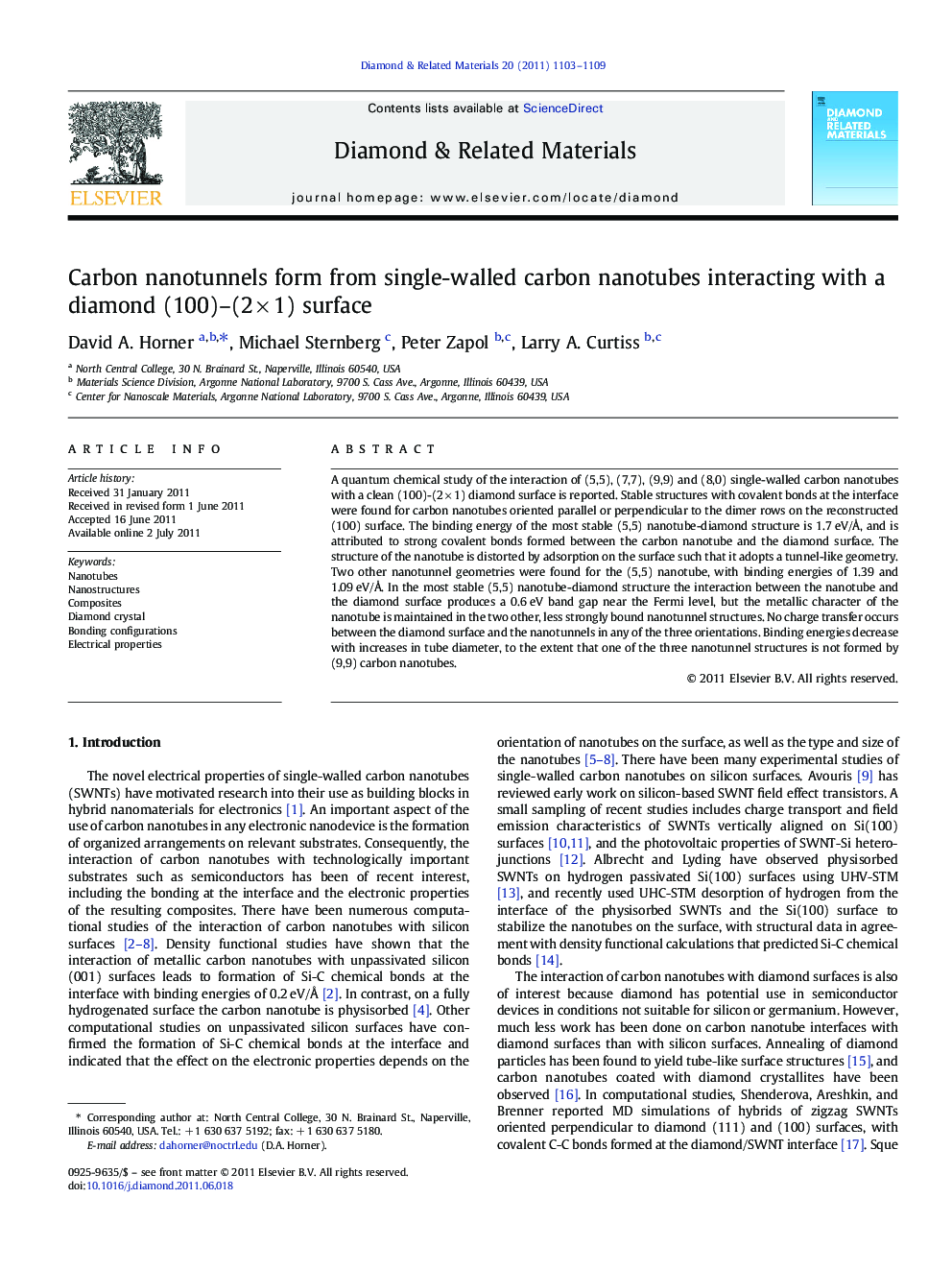| Article ID | Journal | Published Year | Pages | File Type |
|---|---|---|---|---|
| 701863 | Diamond and Related Materials | 2011 | 7 Pages |
A quantum chemical study of the interaction of (5,5), (7,7), (9,9) and (8,0) single-walled carbon nanotubes with a clean (100)-(2 × 1) diamond surface is reported. Stable structures with covalent bonds at the interface were found for carbon nanotubes oriented parallel or perpendicular to the dimer rows on the reconstructed (100) surface. The binding energy of the most stable (5,5) nanotube-diamond structure is 1.7 eV/Å, and is attributed to strong covalent bonds formed between the carbon nanotube and the diamond surface. The structure of the nanotube is distorted by adsorption on the surface such that it adopts a tunnel-like geometry. Two other nanotunnel geometries were found for the (5,5) nanotube, with binding energies of 1.39 and 1.09 eV/Å. In the most stable (5,5) nanotube-diamond structure the interaction between the nanotube and the diamond surface produces a 0.6 eV band gap near the Fermi level, but the metallic character of the nanotube is maintained in the two other, less strongly bound nanotunnel structures. No charge transfer occurs between the diamond surface and the nanotunnels in any of the three orientations. Binding energies decrease with increases in tube diameter, to the extent that one of the three nanotunnel structures is not formed by (9,9) carbon nanotubes.
Graphical abstractFigure optionsDownload full-size imageDownload as PowerPoint slideHighlights► (n,n) SWNTs form tunnel structures upon adsorption onto clean diamond (100)-(2 × 1). ► Some carbon nanotunnels retain the metallic character of the isolated nanotubes. ► Nanotube-diamond binding energies decrease with increases in tube diameter.
